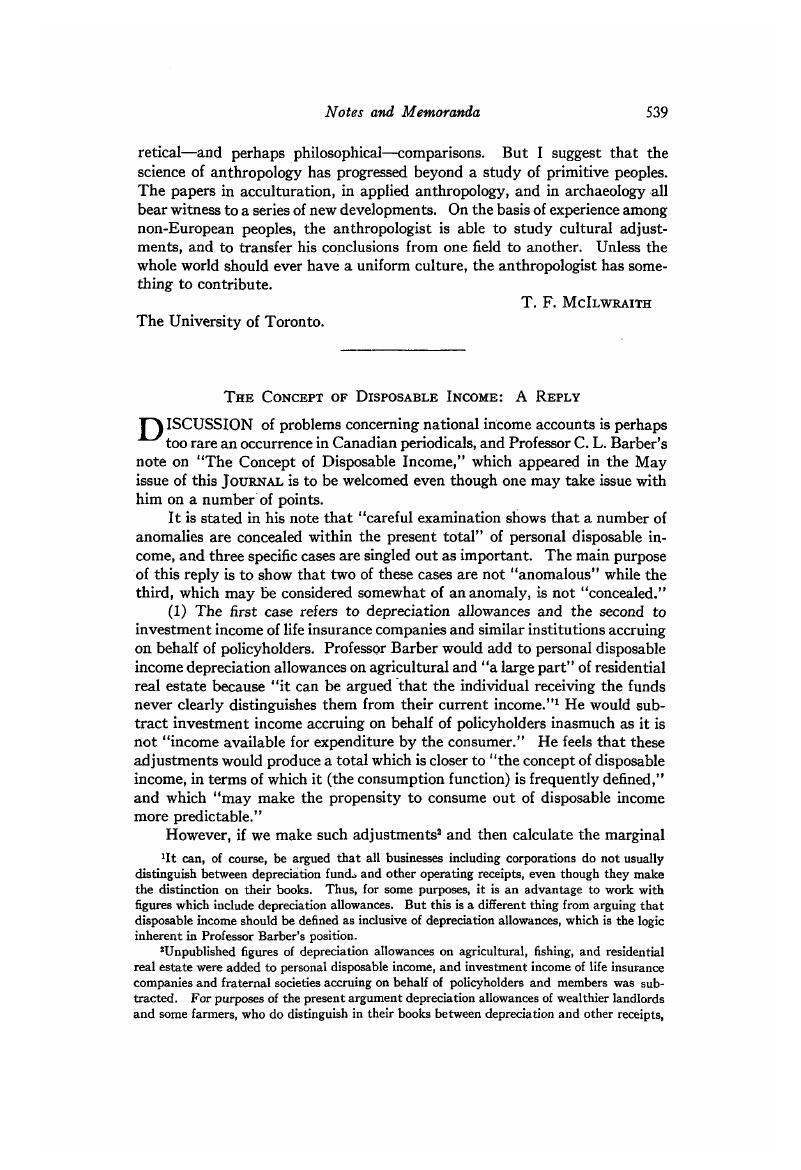No CrossRef data available.
Article contents
The Concept of Disposable Income: A Reply
Published online by Cambridge University Press: 07 November 2014
Abstract

- Type
- Notes and Memoranda
- Information
- Canadian Journal of Economics and Political Science/Revue canadienne de economiques et science politique , Volume 15 , Issue 4 , November 1949 , pp. 539 - 542
- Copyright
- Copyright © Canadian Political Science Association 1949
References
1 It can, of course, be argued that all businesses including corporations do not usually distinguish between depreciation funds and other operating receipts, even though they make the distinction on their books. Thus, for some purposes, it is an advantage to work with figures which include depreciation allowances. But this is a different thing from arguing that disposable income should be defined as inclusive of depreciation allowances, which is the logic inherent in Professor Barber's position.
2 Unpublished figures of depreciation allowances on agricultural, fishing, and residential real estate were added to personal disposable income, and investment income of life insurance companies and fraternal societies accruing on behalf of policyholders and members was subtracted. For purposes of the present argument depreciation allowances of wealthier landlords and some farmers, who do distinguish in their books between depreciation and other receipts, should have been deducted. If this adjustment were feasible it would probably reduce further the differences in marginal propensity to consume as obtained by the two methods. Strictly speaking, investment expenses of life insurance companies and fraternal societies which are included with consumer expenditure, in keeping with the treatment of these institutions as associations of individuals, should have been deducted. Imputed banking services to individual depositors have not been deducted from either the income or the expenditure figures.
3 Similar results are obtained if each adjustment is made separately.
4 The marginal propensity to consume, obtained by fitting a straight line to the original data, was .7612 using the accepted definition of personal disposable income and .7569 using Professor Barber's definition. The two scatter diagrams were very similar and so were the two correlation coefficients. Further testing for significance appeared superfluous.
5 See, for example, Klein, L. R., Economic Fluctuations in the United States, 1921-1949 (New York, forthcoming in 1949).Google Scholar In Chapter 2 Klein includes corporate saving in non-wage income and uses this variable in the consumption equation of one of his models.
6 “Net” in the sense that depreciation allowances have been deducted.
7 The Dominion Bureau of Statistics carried out a nationwide sample survey of consumer income, expenditure and saving in September, 1948. The results are now being tabulated.


